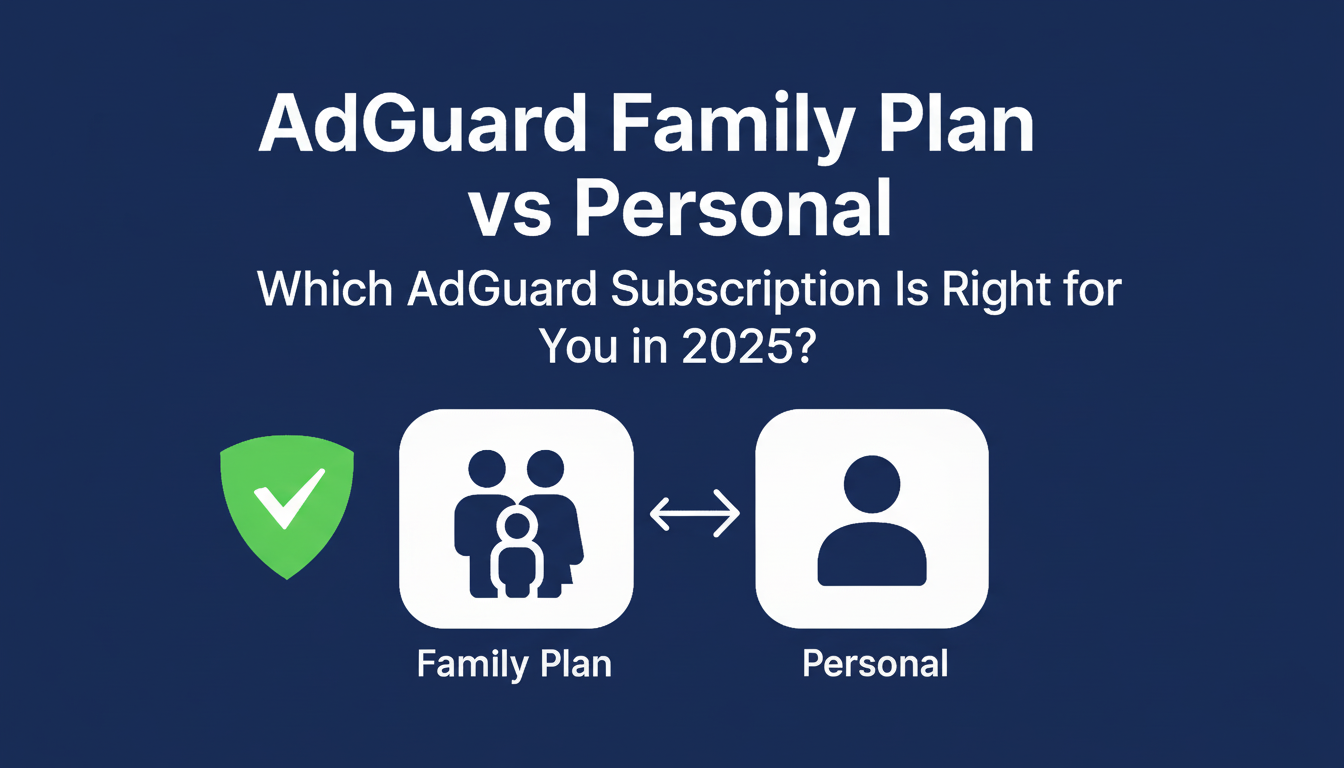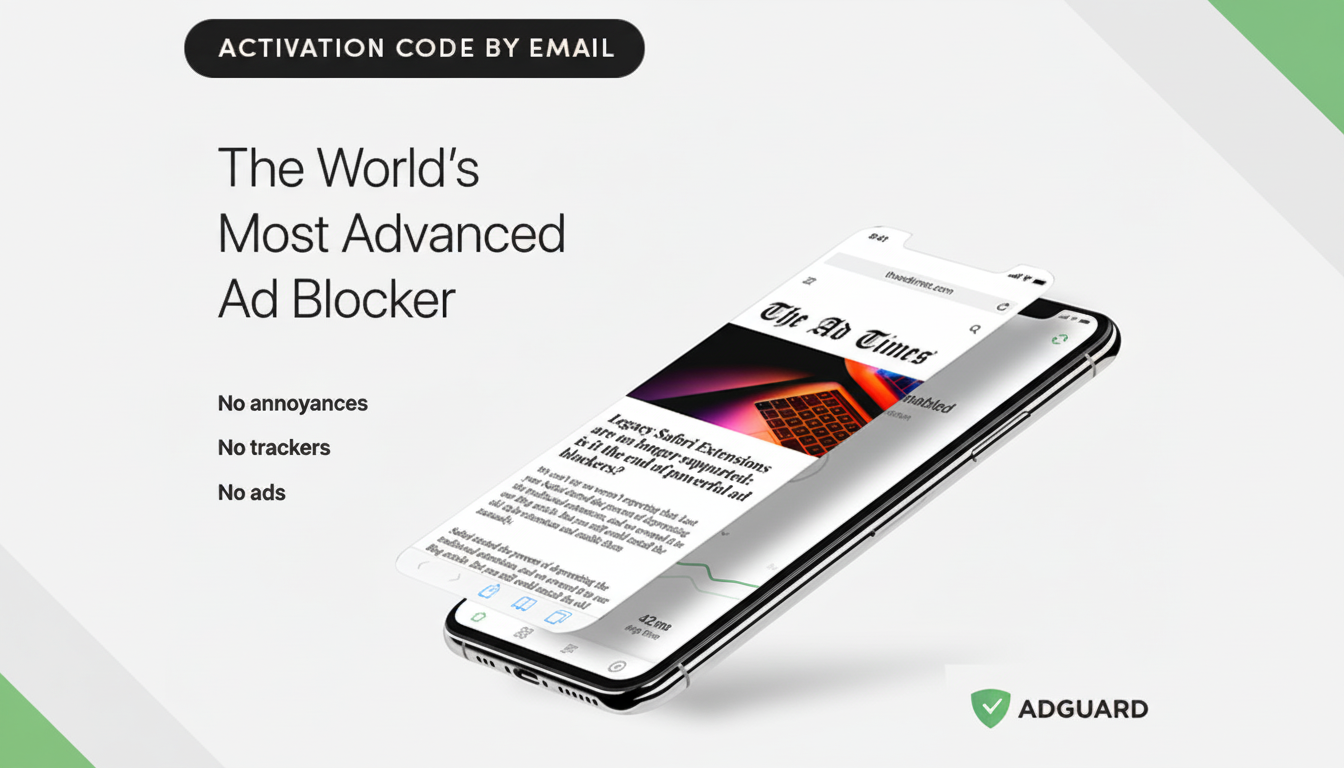AdGuard offers its Family Plan for $39.99 in a headline deal, permitting one-time coverage for up to nine devices. The software blocks ads while streaming and surfing, shuts down trackers, and offers optional parental controls, with no recurring subscription fee. The product’s standard list price is $169.99, meaning new users stand to save 76% with the current offer. Families receive a system-wide ad-blocking license to use anti-tracking on Windows, macOS, Android, and iOS, with nine device slots to spread across a residence. In practice, AdGuard is unlike many browser-only ad-blocking extensions. Because many apps load web content via the OS, it filters traffic at that level, ensuring ads are obstructed not just in Chrome, Edge, Safari, or Firefox but also wherever web content appears.
What you get with the AdGuard Family Plan license
The Family Plan license activates system-wide ad blocking on Windows, macOS, Android, and iOS, providing nine slots for devices to spread across a home. AdGuard behaves differently than many extensions that only work inside browsers. Because many apps display web content using the OS’s integrated browser components, it filters traffic at this level. This guarantees blocking not just in Chrome, Edge, Safari, or Firefox but also ads or tracking in numerous apps that load web content. Key features include content filtering, DNS-based protection, anti-tracking, and a robust rules engine that supports popular lists like EasyList and AdGuard’s own filters. Families can enable Safe Search, and adult content can be blocked by category, while advanced filters enable consumers to apply custom ad lists for sites or services or export their ad-blocking settings.

Key features include:
- System-wide ad blocking on Windows, macOS, Android, and iOS
- DNS-based protection with a local DNS engine for network-level blocking
- Anti-tracking and a robust rules engine supporting EasyList and AdGuard filters
- Optional parental controls and Safe Search for family devices
- Custom filters, per-site rules, and settings export/import options
How AdGuard reduces ads in streaming and web apps
AdGuard can use layering. It is capable of examining the user’s desktop and Android HTTPS traffic (after user-agreed certificate installation), killing ads and tracking scripts before they appear. This is why pre-rolls and mid-rolls in browser video players tend to vanish. On the other hand, Apple’s content-blocking API provides powerful Safari rules on iOS, while a DNS profile reduces system-wide trackers. A local DNS engine may block the bulk of ad and telemetry domains at the network frontier, which is useful on gadgets and applications regular filter lists cannot access.
An example is the way YouTube works through a desktop browser with the filtration option enabled, often loading instantly owing to a lack of pre-rolls. The mobile app, however, may offer poor reliability; platform restraints and server-side ad stitching are the main reasons for that. The same applies to news clips, sports videos, general site navigation, and fast channels inside web players.
Rising demand for ad blocking and privacy controls
The surge in ad blocking demand has been well documented. U.S. digital ad revenue reportedly exceeded $225 billion; the most recent full-year IAB Internet Advertising Revenue Report shows the U.S. is no exception in an escalating marketplace. Streaming platforms have embraced ad-supported tiers; from the beginning, market researchers like Antenna noted an increase in ad-supported plan engagement as households kept up with the industry trend.

Another driver is privacy. A number of academic studies at Princeton University and elsewhere have tracked third-party tracking across over 93% of top websites. Blocking can reduce the retargeting that “follows you around,” while also reducing page sizes and bandwidth usage.
There’s a performance angle, too. Fewer ad calls and trackers usually mean faster page loads and lower CPU and battery drain. In independent tests by browser vendors and privacy researchers, eliminating heavy ad tech often delivers measurable improvements in speed and data use, especially on mobile connections. In our experience and in user reports, AdGuard excels on desktop browsers and Android, where it can remove banners, pop-ups, pre-rolls, and mid-rolls in most web players, plus mute the maze of trackers that fuel invasive targeting. Safari on iOS benefits from strong content rules, and DNS filtering reduces system-level noise across apps. However, some streaming services use server-side ad insertion and DRM to braid commercials directly into the video stream, making full removal hard in native apps. AdGuard provides tools and filters to minimize many ad surfaces, but results vary by platform and service. The company updates filters frequently as sites change tactics, and users can toggle protection per site when something breaks.
Cost math on a one-time license for nine devices
Plenty of privacy and utility apps bill annually, often $20 to $60 per seat. At $40 for nine devices, this deal undercuts typical yearly costs within months, and the license doesn’t meter features behind tiers. If you manage a mix of laptops, phones, and a family desktop, the per-device effective price is a few dollars, with no renewals to watch.
For people fed up with pre-rolls and pop-ups or those who need less tracking following them over the web, the value proposition is simple for once. In one purchase of AdGuard’s Family Plan for $39.99, you get expansive, system-wide ad blocking, meaningful privacy boosts that matter, and effective parental controls.

